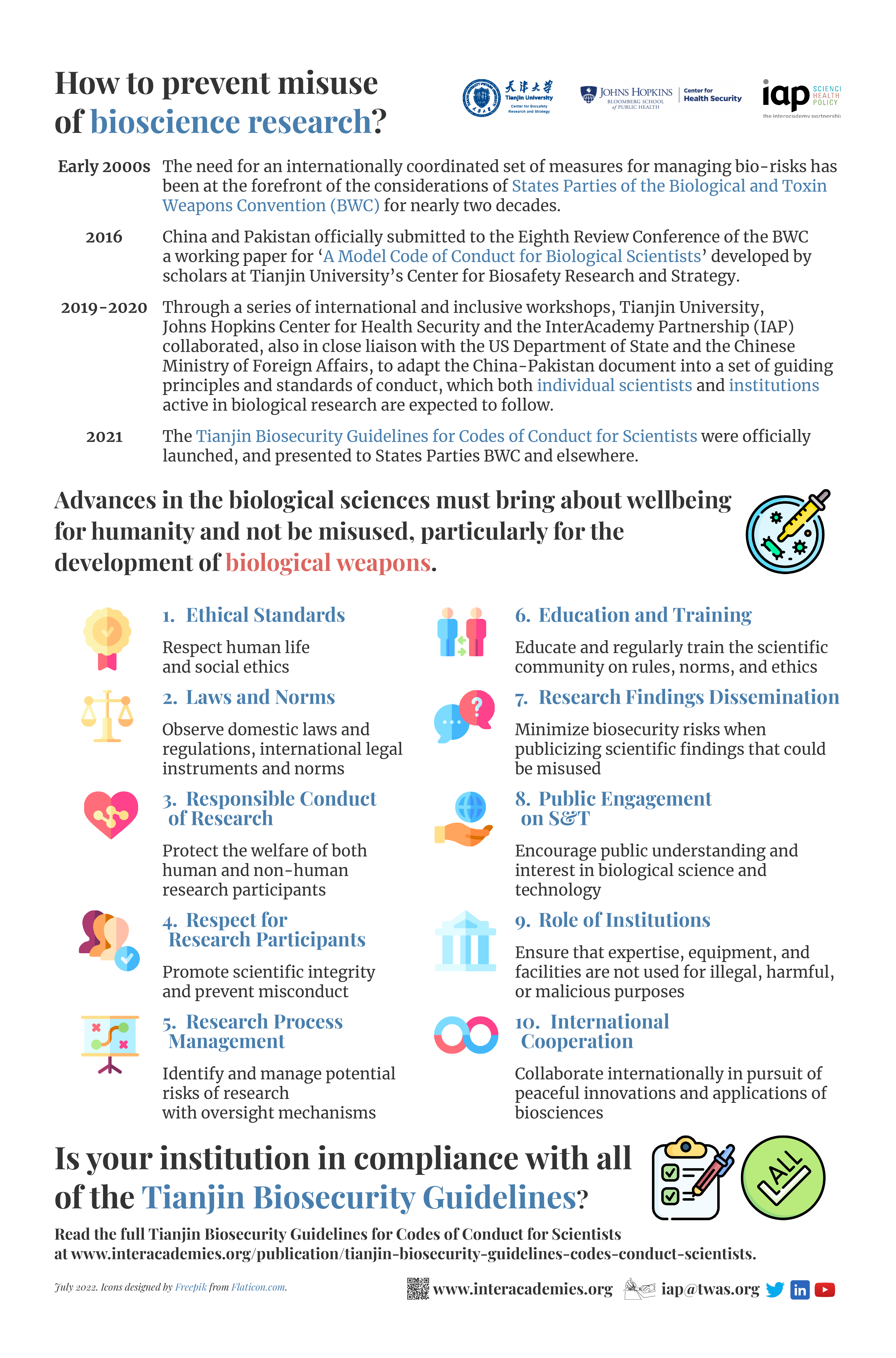How to prevent misuse of bioscience research?
Click on the image below to see the infographic in full size.
This infographic was presented at the poster session of the 2022 edition of the EuroScience Open Forum (ESOF).
The need for an internationally coordinated set of measures for managing bio-risks has been at the forefront of the considerations of States Parties of the Biological and Toxin Weapons Convention (BWC) for nearly two decades.
In 2006, China and Pakistan officially submitted to the Eighth Review Conference of the BWC a working paper for ‘A Model Code of Conduct for Biological Scientists’ developed by scholars at Tianjin University’s Center for Biosafety Research and Strategy.
Through a series of international and inclusive workshops organised between 2019 and 2020, Tianjin University, Johns Hopkins Center for Health Security and the InterAcademy Partnership (IAP) collaborated, also in close liaison with the US Department of State and the Chinese Ministry of Foreign Affairs, to adapt the China-Pakistan document into a set of guiding principles and standards of conduct, which both individual scientists and institutions active in biological research are expected to follow.
In 2021,the Tianjin Biosecurity Guidelines for Codes of Conduct for Scientists were officially launched, and presented to States Parties BWC and elsewhere.
Advances in the biological sciences must bring about wellbeing for humanity and not be misused, particularly for the development of biological weapons.
- Ethical Standards
Respect human life and social ethics - Laws and Norms
Observe domestic laws and regulations, international legal instruments and norms - Responsible Conduct of Research
Protect the welfare of both human and non-human research participants - Respect for Research Participants
Promote scientific integrity and prevent misconduct - Research Process Management
Identify and manage potential risks of research with oversight mechanisms - Education and Training
Educate and regularly train the scientific community on rules, norms, and ethics - Research Findings Dissemination
Minimize biosecurity risks when publicizing scientific findings that could be misused - Public Engagement on S&T
Encourage public understanding and interest in biological science and technology - Role of Institutions
Ensure that expertise, equipment, and facilities are not used for illegal, harmful, or malicious purposes - International Cooperation
Collaborate internationally in pursuit of peaceful innovations and applications of biosciences
Is your institution in compliance with all of the Tianjin Biosecurity Guidelines?
Read the full Tianjin Biosecurity Guidelines for Codes of Conduct for Scientists at www.interacademies.org/publication/tianjin-biosecurity-guidelines-codes-conduct-scientists.


